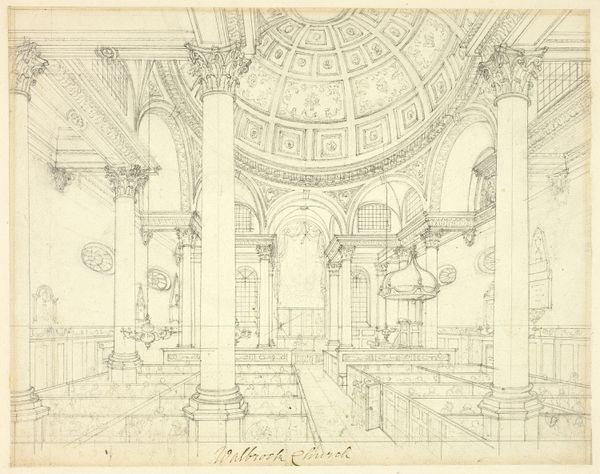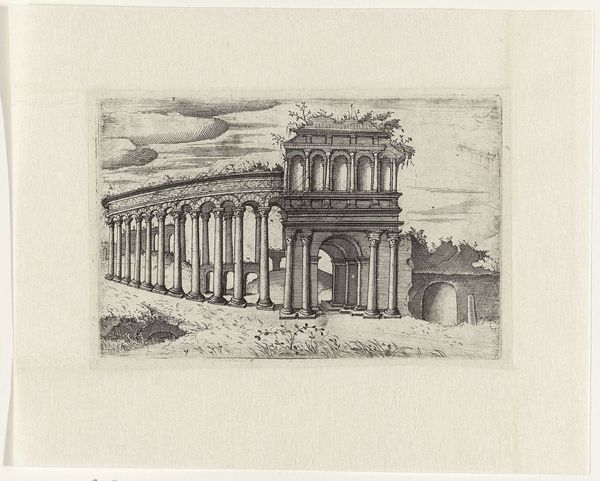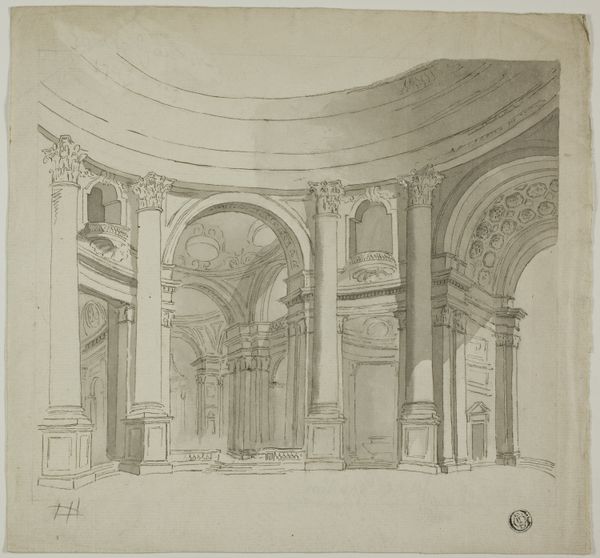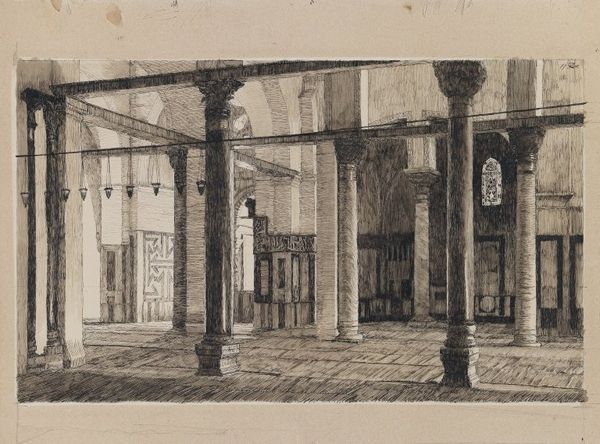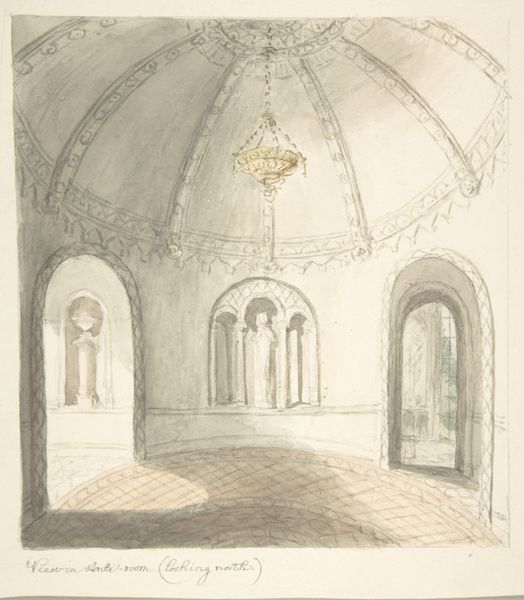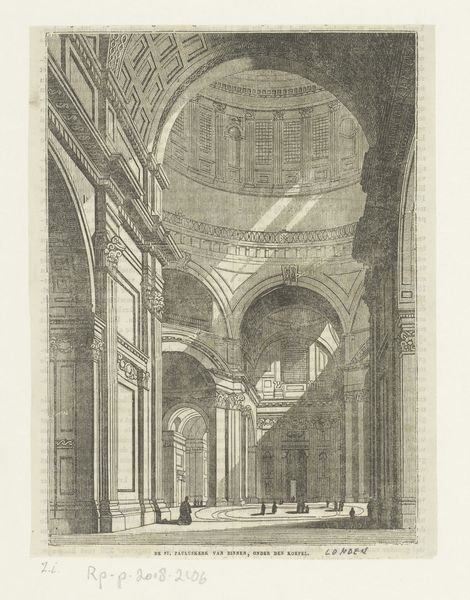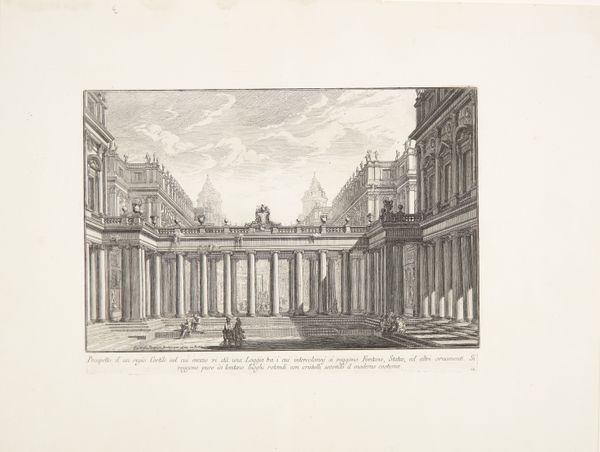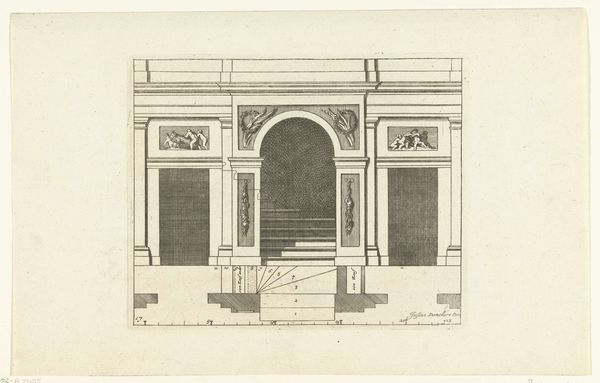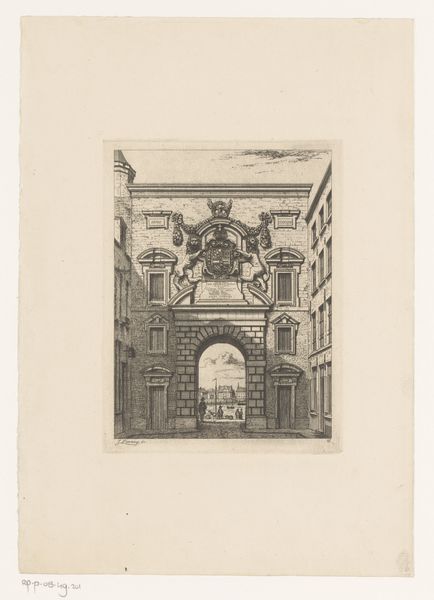
print, etching, engraving, architecture
# print
#
etching
#
old engraving style
#
11_renaissance
#
geometric
#
cityscape
#
italian-renaissance
#
engraving
#
architecture
Dimensions: height 113 mm, width 150 mm
Copyright: Rijks Museum: Open Domain
Curator: Take a look at Lambertus Suavius’ “Interieur van de Santa Costanza te Rome,” created around 1560. It's an etching and engraving offering a glimpse into Renaissance architectural fascination. Editor: Whoa, that's… intense. Immediately, I'm struck by the geometry; all those perfect circles and squares creating an otherworldly serenity. Like stepping into a divine equation. Curator: Indeed! Suavius has captured not only the building's structure but something of its soul. Note the process; the delicate lines achieved through etching and engraving showcase the era's meticulous dedication to craftsmanship and replicability. We are considering art as information. Editor: Exactly! Think of the physical labor involved in such precise execution. Each line is a decision, a negotiation with the copper plate. I wonder about his workshop, the smell of acid, and the pressure to perfectly translate this grand space onto a small, portable piece. Was the original drawing based on observation on a “Grand Tour,” and how much creative license did Suavius take, I wonder. Curator: The print allows this magnificent space, often reserved for elites or pilgrims, to enter more humble dwellings. Think about it being acquired, handled, maybe pinned to the wall of a craftsman! That transformation through reproductive media gives us, now, also, the same view, as a kind of cultural touchstone and exchange. It reminds us of our shared human quest for the sublime! Editor: It brings up questions about how we value architectural labor now versus then, and how technology has shifted that value. This also echoes my point about distribution; the physical labor put into the space can travel in this form as idea rather than thing. We encounter the ghost of the work it took to create the space and this picture. Curator: It is this distribution, though, that moves the original architectural vision into so many more consciousnesses, including ours centuries later, to engage not just with craftsmanship and making, but something spiritual. Editor: Hmm. Material realities meet ethereal aspirations. Perhaps Suavius unwittingly created a space where heaven and earth grapple—literally, in the texture of the plate itself. Curator: Food for thought! It truly embodies Renaissance ideals through geometric precision, its tangible creation, and immaterial vision. Editor: Exactly, the sheer labor of representation almost becomes the thing that's represented; this brings a great wonder.
Comments
No comments
Be the first to comment and join the conversation on the ultimate creative platform.
